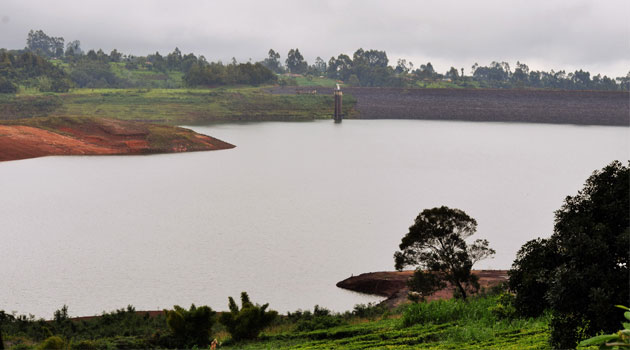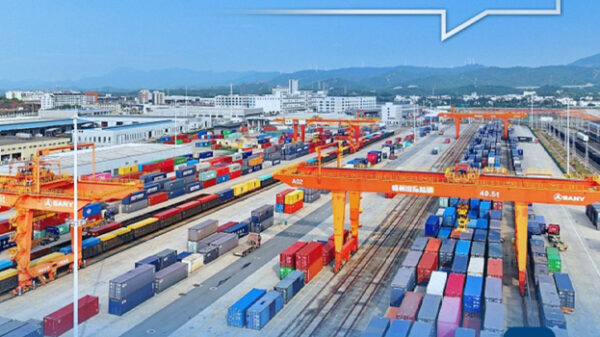
“When you see there is a lot of tea, it is a sign that it is not raining heavily, since if it was, we would not get high production of tea.”/MOSES MUOKI
NDAKAINI, Muranga, Apr 25 – In the comfort of their homes and offices, Nairobi residents have been raising queries over the unending and inconvenient rationing of water.
They wonder how the heavy downpour across many parts of the country has left Nairobi’s main source of water, Ndakaini Dam, ‘empty’.
The rains so heavy that roads, bridges and even lives have been washed away and yet Nairobi’s taps remain dry.
What exactly is happening?
In search of answers, Capital FM News visited the dam on a fact finding mission in a bid to unravel the mystery that has left many baffled.
On that trip, Capital FM News established that the water levels of the Ndakaini Dam are indeed low.
“For two months and counting, the whole country has received rain non-stop… Everywhere is flooded from Mandera to Homa Bay… Water is all over… Miraculously, the water is avoiding our Dams,” Lawyer Donald Kipkorir posted on twitter in sentiments echoed by many city residents.
Upon arrival to the dam, from outside, one can see just how drastic the situation is.
Areas that should be submerged now visible with the water levels expected to decline even further; a situation that had been attributed to the pro-longed drought in the country, blamed on destruction of environment and more so the water catchment areas.
– The Mystery unraveled –
Here are the facts as shared with this reporter by a senior official, not allowed to speak to journalists, at the Nairobi City Water and Sewarage Company, in Ndakaini.
According to the official, the water levels have only risen to 33.8pc from 33pc in the last three days.
“It is only the past three days that we have had a heavy rainfall,” the officer said.
Contrary to the argument out there, he said, Ndakaini is a highland dam, which does not get water from floods.
The dam is not designed to collect flood waters.
Ndakaini dam get its water from three main rivers: Githika, Thika and Kayuyu that are fed by tributaries streaming-in from the Aberdare ranges.
“The problem is the source of water for the tributaries,” the officer told Capital News.
This being the case, it means the amount of rainfall in the Aberdare range is wanting, he said.
“You see,” the officer explained, “the tributaries ‘feeding’ the three rivers forms once the aquifers in the water catchment areas get recharged.”
“The rivers continue to flow whether it rains or not but that drains the aquifers, reducing the water even further,” he said.
In this case, he explained that the water aquifers in the Aberdare Ranges have been recharging for the last few weeks the country has received a significant amount of rain.
If the rainfall received in the last three days continues, the Company hopes the dam will get 50 to 60 per cent full.
The last time it was full capacity was in 2016 till June, after which the rains failed, extending up to 2017.
The dam was ‘closed’ on Sunday to allow more water to be retained.
As of Tuesday, the dam had 23 million litres at 33.8 percent, against its full capacity of 70 million litres.
– Locals not spared either in the shortage –
Elizabeth Waithera has been a resident of Ndakaini for 50 years and says the water levels have hit a historical low.
There are bridges that they have not been able to cross for over 20 years because of water, but not anymore, she says.
“It has never reached these levels but it has not been raining like before,” she said.
Of concern, she said, is that the main rivers supplying water to the damn have not flooded, like it has been the case before.
“It is not raining the amount of rain we usually get in April. The rain is just enough for tea farming because this is an area where we do a lot of tea growing,” she said.
“When you see there is a lot of tea, it is a sign that it is not raining heavily, since if it was, we would not get high production of tea.”
Despite being a few metres from the dam, she says locals too encounter water rationing during the dry season.
“Those of us who stay around the dam, we would like a constant supply of water. During the dry-spell, we get only once in a week yet we are the people who supply Nairobi with water,” she said.
Human activities upstream have also been blamed of the low amounts of water in the three rivers supplying the dam with water.
– About Ndakaini dam –
The dam is operated by the Nairobi City Water and Sewerage Company.
Water from the dam is usually conveyed through a system of tunnels running from the dam, tapping Kiama River and Kimakia River and diverting the flows to Chania River at the Mwagu Outfall.
Water is tapped from Chania River at Mwagu and conveyed via a tunnel to the Mataara chamber from where it’s conveyed by pipelines to Ngethu water production plant.
It has a storage capacity of 70,000,000m3 (70 billion litres) at full storage level of 2,041 meters above sea level and a depth average of 65m.
When functional, the dam Produces 430,000m3 per day of water that is about 84 per cent of total supply of water to Nairobi residents.
The dam’s catchment area measures 75 square Kilometer, which consists of Kimakia and Gatare Natural forest which form Aberdare Ranges.














































